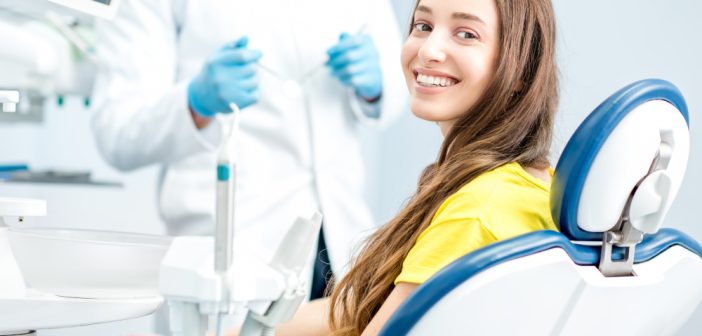Do you want a pearly white smile that catches everyone’s eye? Not only is maintaining good oral hygiene aesthetically pleasing, but it is also crucial to maintaining a healthy mouth.
Did you know one in four adults struggles with cavities? We have been taught from a young age that brushing our teeth twice a day and flossing will do the trick. Now that certainly is helpful, but it doesn’t necessarily mean you won’t ever experience a cavity, gum issues, or even bad breath. To take your oral hygiene to the next level, try tongue scraping, oil pulling, rinsing twice, and using the modified bass technique to brush.
Tongue Scraping
Tongue scraping is an easy and effective way to support a healthy mouth. Taking up this simple habit can help you clear away debris, bacteria, and dead cells, leaving your mouth feeling refreshed. If you’re new to tongue scraping, here are some steps to get started:
- Stick your tongue out.
- Start at the back of your mouth.
- Slowly bring the scraper to the front of your tongue.
- Repeat two to three times using light pressure.
- Rinse the scraper off between each time.
- Rinse your mouth out.
Now that you know how to scrape your tongue, it’s time to pick out which version of the tool is best for you. A stainless steel scraper will be more durable, and many of them are dishwasher-safe. If you are still not sure about tongue scraping or want a gentler option, consider a plastic scraper or a tongue brush.
Oil Pulling
Do you want to try the popular new trend of oil pulling? It only takes 15 to 20 minutes and about a tablespoon of oil. Common oils to use are coconut oil and olive oil due to their antimicrobial and antioxidant properties. Simply put the oil of your choice in your mouth and swish it around just like you would do with mouthwash.
Oil pulling has been around for many years, and “scientific evidence suggests that oil pulling therapy may reduce the total oral bacterial count and reduce plaque and gingival scores,” according to the National Library of Medicine. If you are thinking about taking more of a natural approach to your oral health or just want to try something new, give oil pulling a try and see how clean your mouth feels after.
Rinse Twice
Did you know that brushing only cleans 25 percent of your mouth? To ensure your mouth is being cleaned properly, it is important to rinse two times a day after you have brushed and flossed.
There are several different types of mouthwash you can use. If you are looking to prevent cavities and lower your chances of gingivitis and gum disease, look for ones that include fluoride, antiplaque, antibacterial, antimicrobial, or antigingivitis ingredients to achieve the best results.
Modified Bass Technique
It’s a well-known fact that everyone should be brushing—but the best method to use is not as widely known. The ADA recommends using the modified bass technique. To do so, hold your toothbrush at a 45-degree angle toward your gums. Brush in small strokes, and make sure to brush each surface area of your tooth to help remove built-up plaque.
Cavities and gum disease are no joke, and no one wants to spend money repairing their oral health. Stay on top of your hygiene to minimize the risk of unwanted dental visits. Tongue scraping, oil pulling, rinsing twice a day, and using the modified bass technique can all help you on your journey of getting and maintaining the brighter smile you want.
A version of this article was published by The Daily Herald. It has been republished here with permission.




